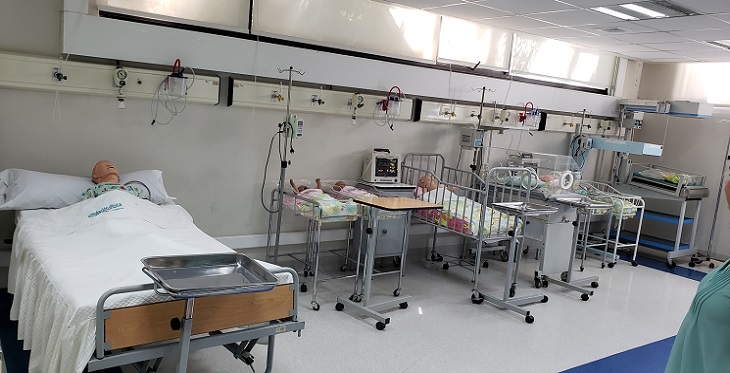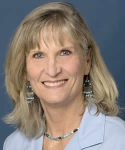In my previous blog on March 26, 2019, I discussed Phase One of “Using Simulation Labs to Teach Future Telehealth Providers at Universidad Mayor (UM) in Chile, South America.” In that blog, I described the expansive rurality of Chile and the simulation lab that is used for educating the health sciences students in Santiago. In this Phase two blog, I will discuss the second half of my visit that demonstrated that Chile has the need, and UM has the equipment available, to educate and train healthcare students about using telehealth.
After my first five days visiting and meeting wonderful people at the Alameda and Huechuraba campuses in Santiago, I flew to the southern region, to a town called Temuco. Although Universidad Mayor has a campus in Temuco, I did not visit because it was summer and students were not on campus. Most college students in Chile live at home, so the college life component of higher education is contained in the summer activities. Each summer, the health sciences students who are studying medicine, nursing, physical therapy, nutrition, ophthalmology, auditory problems, psychology, laboratory technicians, and obstetrics stay at a different rural town high school, with mattresses on the floor, and learn together. I was impressed with the interprofessional approach to learning. In the summer of January 2019, the high school was in a town called Cholchol.
While the vast majority of students were from Chile, students from the U.S. can apply, as long as they speak Spanish, and a small group of medical students from Harvard added to the mix. Most students stay at least two weeks but can stay up to six weeks. The structured rotations include learning from didactic presentations, providing assessments to local residents at health fairs, and traveling to assess those unable to travel to the fair, the postrados. The health fairs were set up in parks and moved to a different village every week. Once the driver of the van was in the vicinity, homes for the postrados were located by asking people along the way if they knew the individual. Sometimes there were no people walking, so the nurse instructor on the van would go up to a house to ask. Finding the postrados was no easy task.
Once located, the students would perform an assessment, going into the small home separately to not overwhelm patients. My observation was that if a young person, younger than 30, lived in the home, they had a smart phone. Caregivers stayed with the postrado, but other family members traveled regularly to the bigger towns for work.
There was no current use of telehealth in rural areas, but the long country of Chile, with visible cell towers in the mountains, has telehealth potential. Educating toward this potential is the impetus for telehealth research that will be proposed in my U.S. Fulbright application in September 2019.
My research has explored best practice uses of mobile smart phone cameras and collaboration software for assessment. Although we commonly use smart phone cameras for visualization, such as Skype and Google + hangout, there is little movement and motion in these meetings. If we want to show a scenario, it is more common to use the camera to create a video and then send it electronically. These strategies do not work for real-time assessments in telehealth. Use of a camera for live human assessment using a camera lens limits what can be viewed. More importantly, it increases the risk of missing environmental cues that might help with understanding a home situation that is part of the assessment. An onsite telepresenter is directed to move the camera around. The telepresenter can be someone who is at the home during the assessment and even the patients themselves. Communication techniques and a structured process are required, because there are no environmental cues to trigger the progression of visualization.
Combining my best practice concerns for technology-enhanced healthcare in the home, the rural needs of Chile and the availability of Universidad Mayor’s simulation lab, my 2019 Fulbright application was developed. Telehealth will be taught to the UM healthcare providers of the future, using the simulation lab. A simulated healthcare scenario will serve as the platform for teaching communication and best practice use of mobile cameras for telehealth. One student will communicate remotely and one student will provide hands-on care during a simulated care scenario. Mannequins will simulate patients, the on-site student will be the telepresenter, and the remote student will guide the assessment.
Effective assessment requires an integrated assessment of the patient, the environment, and available equipment and medications. A remote student will have to instruct an on-site person to move, or place a stethoscope, or other assessment tools, in exactly the correct place to collect the exact information that is needed to diagnose or treat a patient.
The existing interprofessional health science education adds a dimension that is needed in the U.S., to promote an understanding of how professionals can work together to achieve efficient and effective outcomes. When two students work together, one teaching and one following, they both learn.
As Aristotle said, “Teaching is the highest form of understanding.”

